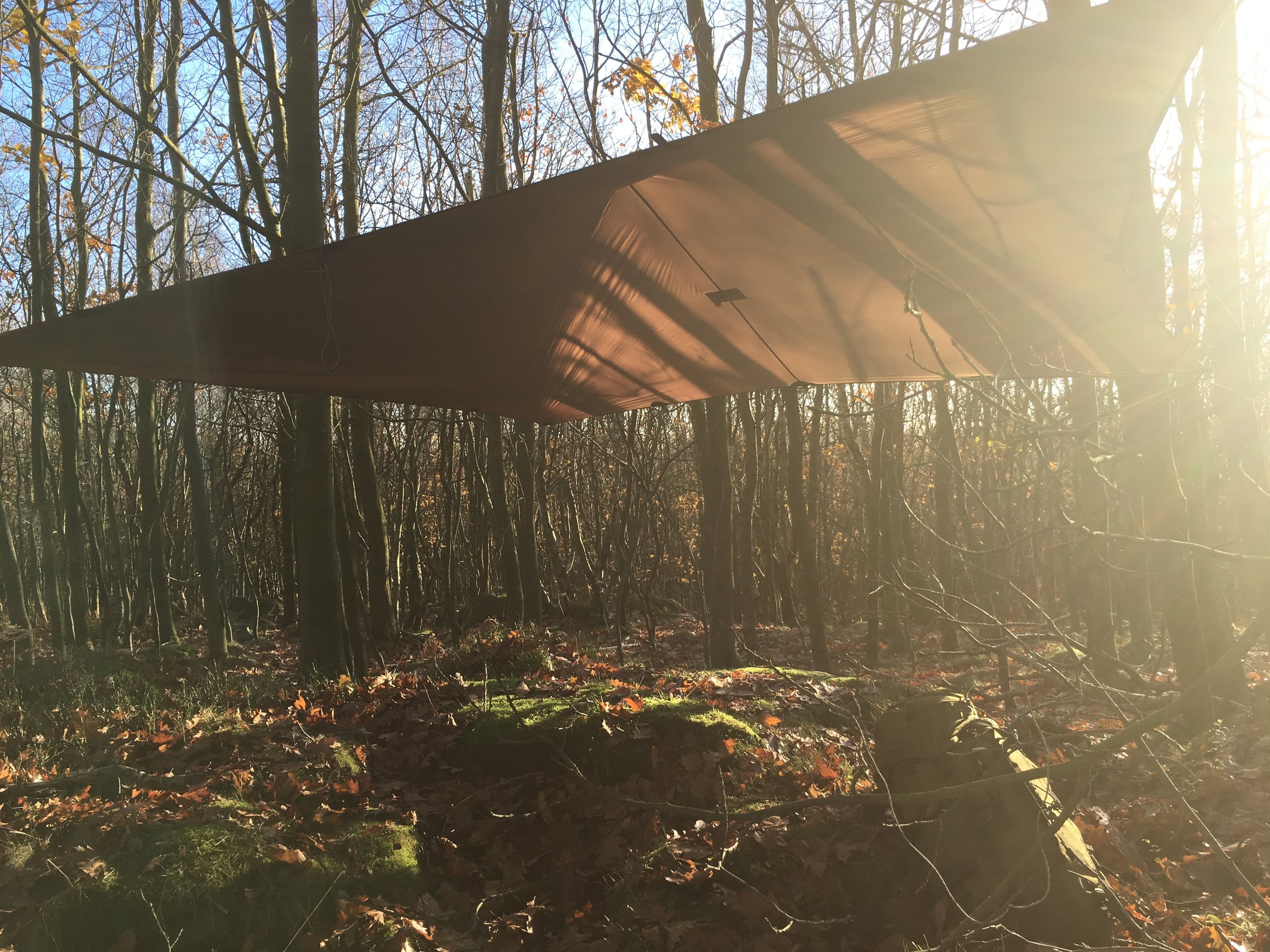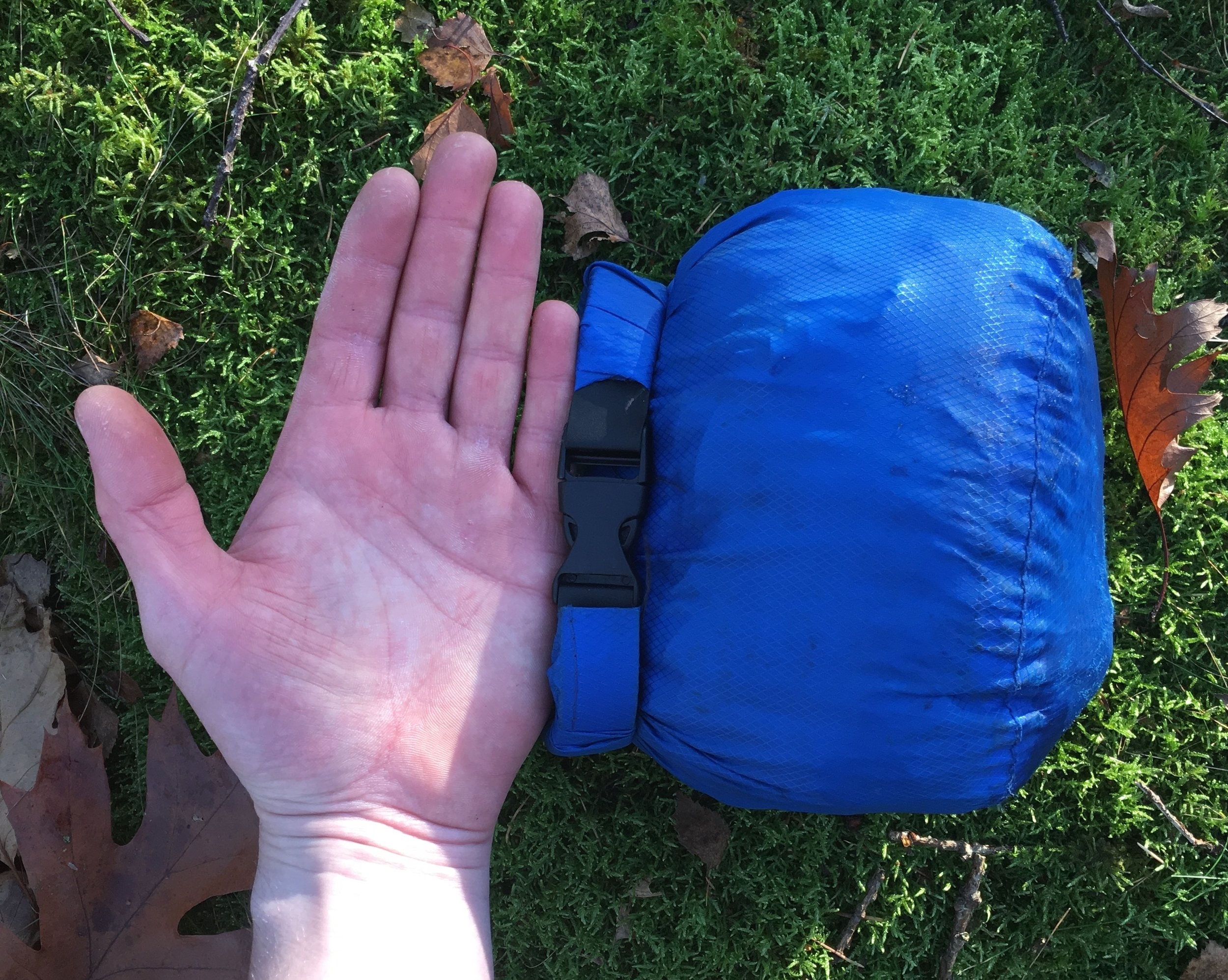Home is where the tarp is...
Jamie Dakota
Hot flask, binoculars, waterproof jacket, lunch...all essential for a walk in the backcountry, true but many a lunchtime break has been damped by rain and soggy, soggy sandwiches.
Carrying a tarp in your rucksack when outdoors has become a habit for me, being from the island paradise that is Great Britain has meant I've had to grow up with a constant watch on the horizon for rain even in the summer, and a good lightweight tarp in my pack has saved many a lunchtime from an otherwise miserable fate.
The various knots you can employ when setting up a tarp can seem tricky to learn, I typically teach just three simple knots which can be used in various ways and are easy to learn.
Often seen as a roof for camping overnight, the tarp can be a more regular feature to your kit list. With practice a person alone can erect a vital parapet against the elements in under a minute, something I teach on our bushcraft courses; and with a couple of minutes, or the help of a friend or two, a lofted canopy can arranged to sit under.
Base camps being arranged on our Family Bushcraft Day
These simple techniques can provide with very little effort a shelter for adults and children alike whilst out braving the weather. I'd advocate strongly going for a hike on rainy days: you'll get the woods to yourself, and feel the swirling vortex of Nature pulling you off on your own private adventure. But of course a shelter can be a welcome 'home' even when the weather is fair: be it a sun-shade or a fixed point in the wilderness and a marker far seen where packs can be left whilst toilet breaks or animal watching might take us a few meters in all directions. My children love a tarp-base when we're out in countryside, even if only for a half hour, it provides them with a touchstone from which they can wander and explore by themselves whilst keeping 'home' in sight.
I generally carry a lightweight, 3x3 metre tarp with me, it can provide shelter for between 6-8 people to stand underneath, and a square tarp is more versatile in the arrangements you can use to set it up. A modern tarp can also be packed very small into a dry-sack, taking up a negligible amount of space in your rucksack and weighing almost nothing. I recommend using an oversized dry-sack to pack it into for a couple of reasons: importantly this will stop your potentially very wet tarp soaking your other kit when you pack it away; and secondly having a dry-sack bigger than you need means it's very easy to pack the tarp away into it when you break camp. A little tip: pack it tightly into the dry-bag but leave it a little squashy, it will stuff better into the gaps between your kit in your rucksack than it would if you stuffed it into a hard ball.
On an Autumn day we'd stopped for lunch under beautiful blue skies and warm sunshine, it had been raining in the morning and continued to rain 10 minutes after I took this photo. We didn't mind though, we had our trusty tarp along for the trip...






